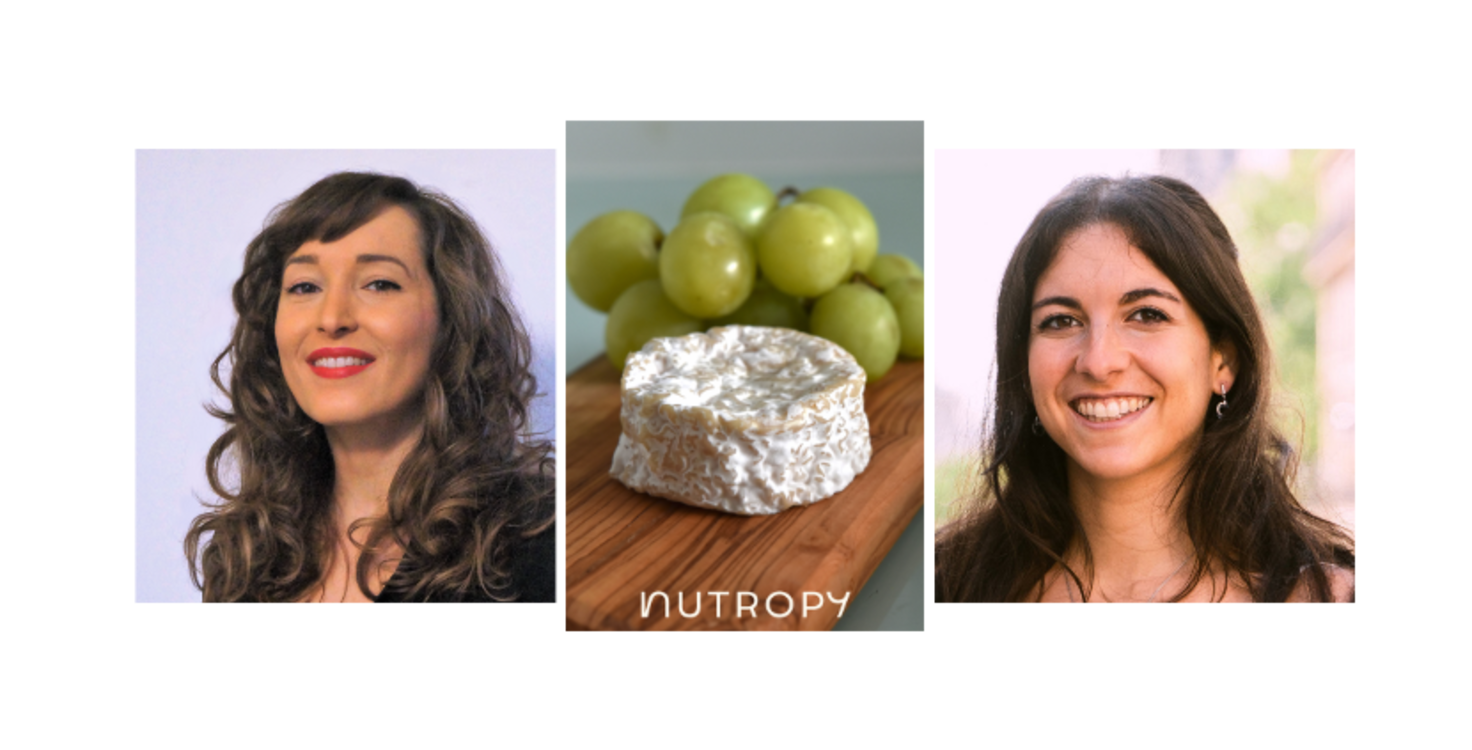In conversation: Nutropy
The dairy sector is a key component of the livestock production industry, and is impacted by material environmental and public health challenges associated with this. Milk production comprises the primary category for dairy, and, outside of fresh milk and its derivatives, cheese is the leading downstream product category.
At present the cheese sector remains a relatively untapped market for plant-based or innovative alternatives. A key reason for this is the challenge facing non-animal-derived cheese products in matching conventional cheese’s nutritional qualities, flavour, and functional properties (such as melting). With this backdrop, there is an opportunity for innovators in this space to create viable cheese alternatives that can capture the taste, texture, and nutritional profiles of conventional cheese, at a competitive price point for consumers.
Researching the Food Technology space, FAIRR spoke with Nathalie Rolland and Maya Bendifallah, PhD from the precision fermentation startup Nutropy, to learn more about the challenges and opportunities facing an innovative company operating within the dairy sector.
Nutropy is a French pioneer B2B startup that enables the next generation of alternative cheese and dairy products. Leveraging precision fermentation technologies, Nutropy develops milk proteins identical to those found in cow’s milk. Unlike plant-based cheese alternatives, which have struggled to make a significant impact on the dairy cheese industry (reaching only around 1% of the market share in the US), Nutropy aims to meet consumer demand by providing highly functional alternative dairy solutions with a low impact process. The team is made up of pioneers, innovators and scientists, all committed to making a sustainable non-conventionally produced cheese product.
Why it is difficult to create non-conventionally produced cheese?
Cheese is a complex product category whose texture, flavour, and melting properties rely on a delicate balance of milk proteins (essentially caseins1), and milk fats, combined with unique microbial processes. The industry's challenge in replicating these qualities with non-animal-derived raw materials, stems from the absence of viable alternatives to casein proteins. Casein, a key component of milk, interacts to form micelles and create the mouthfeel, taste, and texture (melt & stretch) that define conventional cheese. Without these intricate interactions, recreating the complexity of cheese becomes highly challenging.
Nutropy believe precision fermentation, or “brewing” microorganisms like yeast to produce milk proteins in “microscopic factories”, can overcome this challenge by producing the essential proteins required for cheesemaking. The company’s innovative approach aims to create a "cheeseable milk”, a complementary raw material that allows for the development of cheese products that closely replicates the taste, texture and nutrition of conventional cheese, that is able to meet consumer demands.
The cheese sector is evolving through precision fermentation
The cheese sector is rapidly evolving in response to increasing demand for non-animal-derived and health-conscious alternatives. Precision fermentation is at the forefront of this evolution, enabling the production of dairy proteins, such as caseins, without the need for animals. This technology offers a production solution, with potential for a significantly lower environmental footprint than conventionally produced dairy cheese. By replicating the sensory qualities of conventional dairy, including texture and meltability, precision fermentation enables cheeses that closely resemble conventional products.
In terms of sustainability criteria, precision fermentation drastically reduces energy consumption, land use, and water requirements – with potential to reach up to 99% less blue water2 than conventional cheese production methods. As the technology continues to scale, it is expected to become cost-competitive and work in synergy with conventional milk production. While overcoming challenges such as consumer education and regulatory clarity will be key, precision fermentation holds the potential to support the cheese industry’s sustainability and product diversity. Current conventional cheese makers have been using the protein Chymosin produced through this technology as processing aids to coagulate milk for almost 40 years, demonstrating the industry’s ability to incorporate new technologies into existing practices.
Nutropy’s production process
Nutropy’s process uses microorganisms instead of cows to produce compositionally and functionally identical milk proteins for its alternative cheese and dairy products. These proteins are combined with plant-based ingredients to create a milk-like raw material, ready for cheesemaking.
First, Nutropy brew’s its microorganisms in large tanks before separating the target proteins from the “microscopic factories” and nutrient broth. These proteins are then combined with other essential ingredients for cheesemaking, such as plant-based fats, to constitute Nutropy’s “cheeseable milk”. Finally, Nutropy can supply this innovative raw material to industrial dairy partners for cheesemaking.
While casein is essential for cheese, cheese is more than just casein – Nutropy’s unique approach captures the complexity needed to create authentic, delicious cheese alternatives produced independently of animal husbandry. Furthermore, the company’s method is designed to integrate smoothly into existing cheese production, making it easier to bring the next generation of sustainable cheese to consumers.
Challenges facing the precision fermentation sector
Nutropy operates at the forefront of precision fermentation, employing a technology that requires complex and multidisciplinary expertise within both the founding and operational team. Developing and scaling precision fermentation technology from research and development to bringing the product to market, requires significant financial resources. Unlike plant-based products, the animal-free milk proteins derived from precision fermentation must also navigate the regulatory approval processes that are in place in different geographies across the world.
Consumer education and adoption present exciting opportunities for Nutropy. While products have yet to hit the market, the company stated that early indicators are highly encouraging. Feedback from industry stakeholders highlights not only a strong demand for Nutropy’s innovative solution but also its potential to positively impact the cheesemaking sector. These insights give Nutropy confidence in preparing to meet consumer expectations and supporting the industry transition towards greater sustainability.
Material risk and market potential for precision fermented cheese
The development of precision fermentation within the cheese sector appears to offer both economic and environmental opportunities, but is not without challenges. Regulatory hurdles and high initial capital requirements for developing and scaling fermentation technologies present material risks for companies like Nutropy. Furthermore, consumer education and adoption remain critical, and market penetration of non-animal-derived or animal husbandry-free cheeses remains limited compared to conventionally produced dairy products. However, as innovation in food technology develops and production methods that can address key sustainability goals, while also meeting consumer demand for tasty and nutritious non-animal-derived cheese emerge, the potential in the sector remains promising.
For investors and financial institutions interested in the dairy industry or the non-animal-derived protein space, precision fermentation could unlock huge future potential. Innovators that are able to achieve cost-competitive production while successfully navigating evolving regulatory frameworks, will open themselves up to new opportunities and be ready to deliver on changing consumer preferences.
Footnotes
[1] Casein comprises approximately 80% of the protein content in milk and is a key factor in driving the profitability in dairy processing through its essential role in cheese production, high-margin protein supplements, and functional food applications.
Van De Walle, G. (2021, June 16). What is casein? Healthline. Retrieved from https://www.healthline.com/nutrition/what-is-casein
[2] Blue water refers to freshwater sourced from lakes, rivers, reservoirs, and aquifers.
Lundqvist, J. (2009). Water as a human resource. In G. E. Likens (Ed.), Encyclopedia of inland waters (pp. 31-42). Academic Press. https://doi.org/10.1016/B978-012370626-3.00006-5











